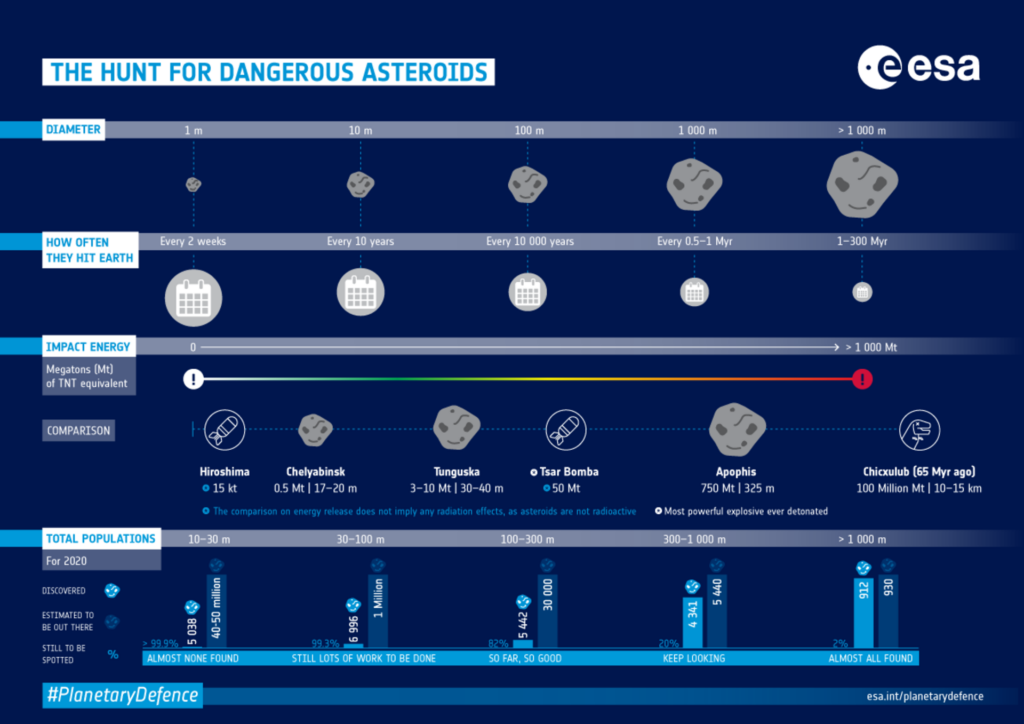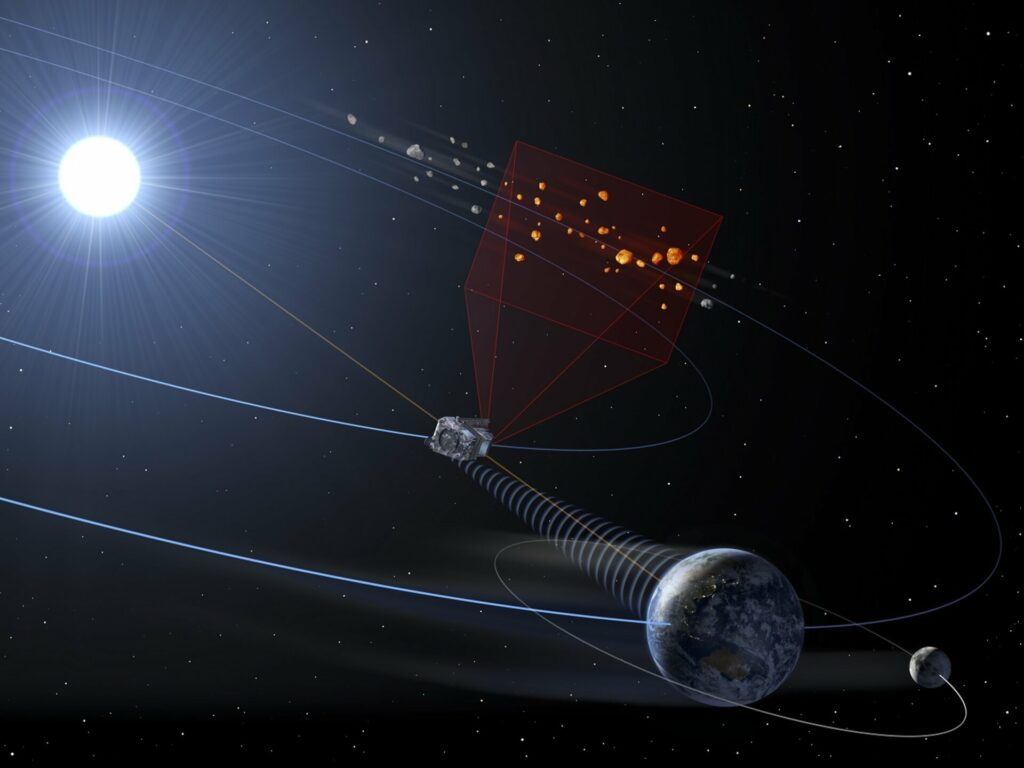The European Space Agency (ESA) is planning a mission to search for asteroids approaching the Earth from the Sun.
Problem of finding “hiding” asteroids
At the moment, astronomers have discovered most of the potentially dangerous asteroids larger than a kilometer. At the same time, there are a significant number of undetected small bodies in the Solar System, which are measured in tens and hundreds of meters in diameter. The fall of such an object will not lead to catastrophic consequences for our planet, but it is quite capable of taking many thousands of human lives.

The search for such asteroids is complicated by the fact that many of them “hide” in the radiance of our Sun. As an example, the famous Chelyabinsk meteorite can be cited. One of the main reasons why it was not detected before the fall was that the asteroid was moving from the direction of the Sun.
NEOMIR Mission
To solve the problem of finding “hiding” asteroids, ESA plans to launch the NEOMIR space telescope. It will be taken to the Lagrange point L1, located at a distance of 1.5 million km from our planet. NEOMIR will conduct observations of the Sun’s surroundings in the infrared range. This will allow it to register radiation coming from the surface of the asteroids themselves.

According to the developers, NEOMIR will be able to find asteroids approaching from the Sun with a diameter of more than 20 meters at least three weeks before they fall to Earth. Even in the most unfavorable scenario, when an asteroid is seen flying near the telescope, it will give a three-day warning. That’s how long it takes for the asteroid to cover the distance from point L1 to the Earth.
At the moment, the launch of NEOMIR is scheduled for approximately 2030. An Ariane 6 rocket will be used for the mission. NEOMIR will have to supplement the results of observations of the NASA-designed “asteroid hunter” NEO Surveyor, which is scheduled to launch in 2028.
According to https://www.esa.int
Follow us on Twitter to get the most interesting space news in time
https://twitter.com/ust_magazine
